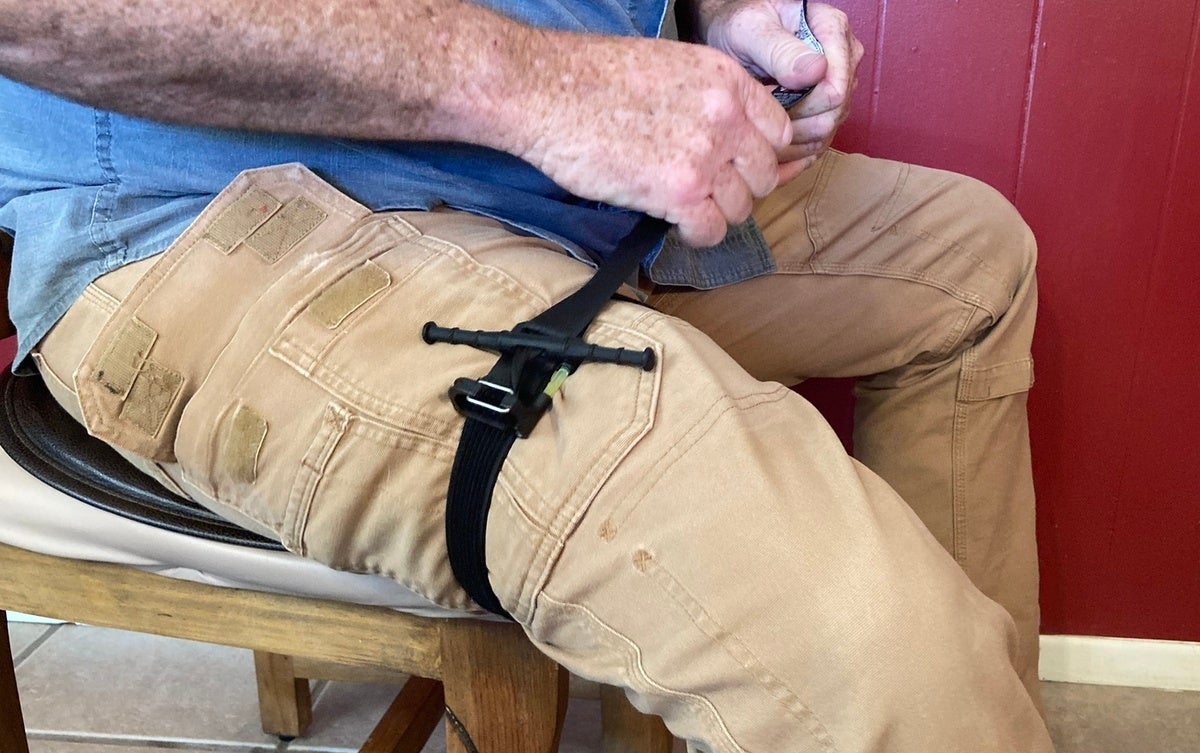AllOutdoor Review – Snakestaff Systems Everyday Carry Tourniquet (ETQ)
Eve Flanigan 08.02.23
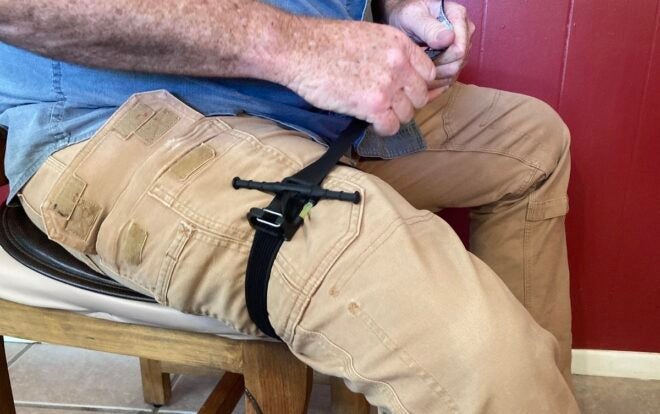
If the War on Terror has yielded any benefit we all can agree on, it’s the understanding and refinement of life-saving tools and techniques for stopping massive blood loss. Especially where blood loss from extremities is concerned, virtually everyone willing to act can prevent death and life-threatening complications by taking simple actions to get the bleeding person to safety and stop blood loss until professional help is available. That brings us to the Snakestaff Systems Everyday Carry Tourniquet (ETQ) which we will review here today.
Medical Coverage on AllOutdoor
- Tourniquet Etiquette – The Do’s and Don’ts of Applying a Tourniquet
- All Things R.A.T.S. Tourniquet
- AllOutdoor Review: My Medic TFAK – Micro Trauma First Aid Kit
- IFAKs: Building an Effective Individual First Aid Kit
Thankfully, it seems that most people in the concealed carry/shooting communities are finally getting past the assumption that a belt or t-shirt will do in the event of a major bleed. Improvised tourniquets such as these are often difficult to get tight enough or to keep tight without a built-in, lockable tightening mechanism. Even when trained and equipped with one of the commonly used tourniquets (TQs) on the market today, though, this important gear is often left behind due to the inconvenience of carrying it. I am a good example of this. On my day job or at the range, I carry SWAT-Ts (Stretch, Wrap, and Tuck TQ) which have functional shortcomings, but easily fit in my back pocket. Better-quality Combat Application Tourniquets (CATs) are stowed inside my front door and on the back of my car’s headrest. As a bit of misfortune demonstrated one day, these locations are sometimes accessible in an emergency, but still, precious time is lost. There is a real need for a reliable, wearable TQ.
Enter Snakestaff Systems’ Everyday Carry TQ (ETQ). Its design is closest to North American Rescue’s CAT, but 65% smaller. My partner, a Tactical Combat Casualty Care instructor, and I, a FEMA “Until Help Arrives” presenter who teach these skills, ordered a handful of ETQs and accessories to see what they’re about. We spent a morning messing around with most aspects of use of these miniature TQs: folding, deploying, and applying them.
Features – Snakestaff Systems Everyday Carry TQ (ETQ)
The Snakestaff Systems TQ is thinner than the CAT – 1″ versus 1.5″. Wider TQs are favored for being less painful to the wearer and less likely to cause new tissue damage. These factors are why the bootlace-thin and very easily carried “RAT” is out of vogue. A wider Snakestaff model is offered, and I think it’s not a bad idea, especially if the person likely to wear it isn’t schooled in staying calm and/or is likely to mentally classify discomfort as pain and; therefore, have less energy for things like hiking to a rescue site.
Windlass strength is a big thing in TQs. This one’s plastic, highly textured for good grip, thicker in the center and secured with 7/8″ webbing for strength and bi-directional turning. The company has done some cold-weather testing to ensure durability in cold. Any plastic and any fabric can become brittle over time with sun exposure, so keeping this or any TQ out of the sun is ideal.
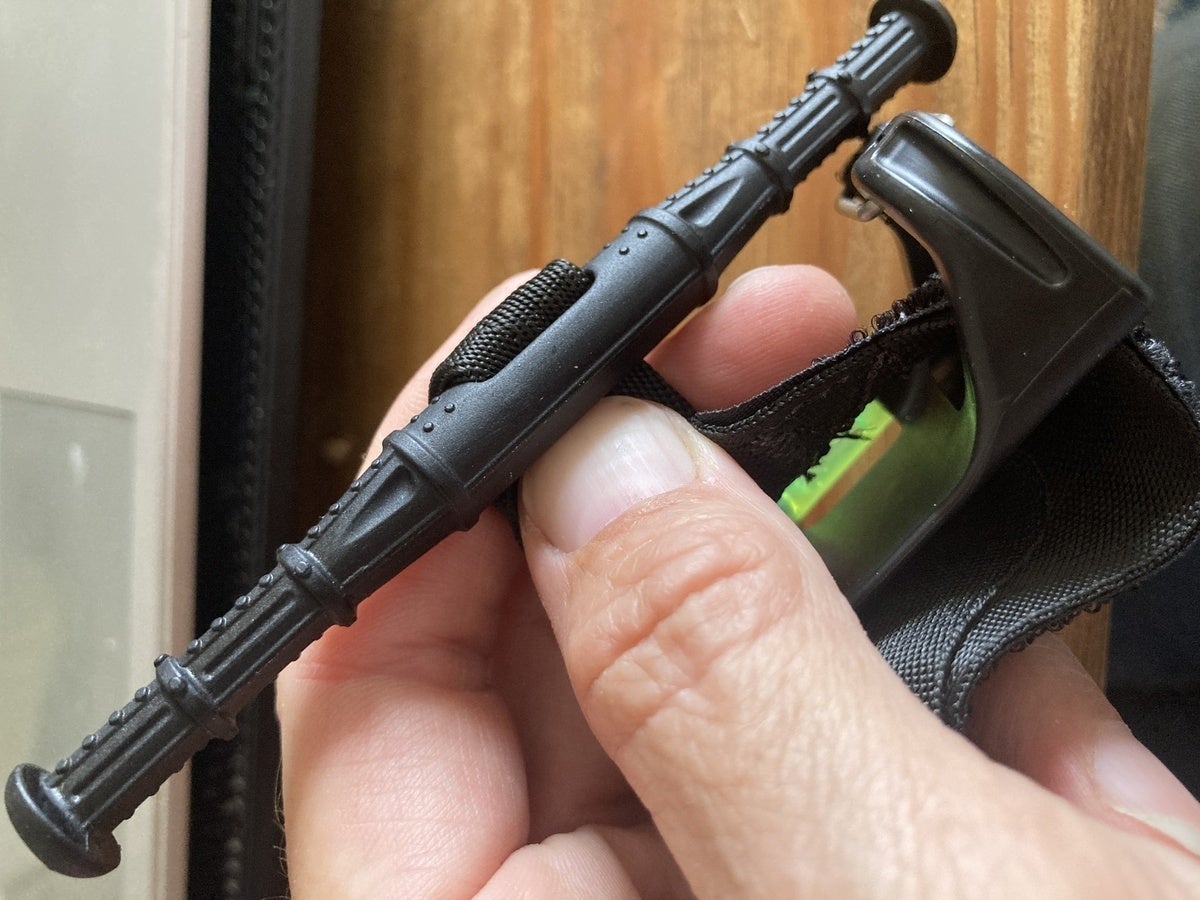
Securing that windlass is just as important. Snakestaff Systems came up with an ingenious C-shaped brace and carabiner type clasp that, once secured, takes considerable effort to unlock. That’s a very good thing in a real emergency; in practice it gave me a nervously funny moment. More on that later.
The ability to fit most anyone is one advantage of the less-popular SWAT-T and RAT TQs. Snakestaff Systems overcomes this with the plastic “hardware” on this TQ. It is capable of shutting down blood flow on infant or dog limbs, and is just as long as the earlier-gen CAT I used for comparison, so it’s also capable of reaching around all but the heftiest of thighs.
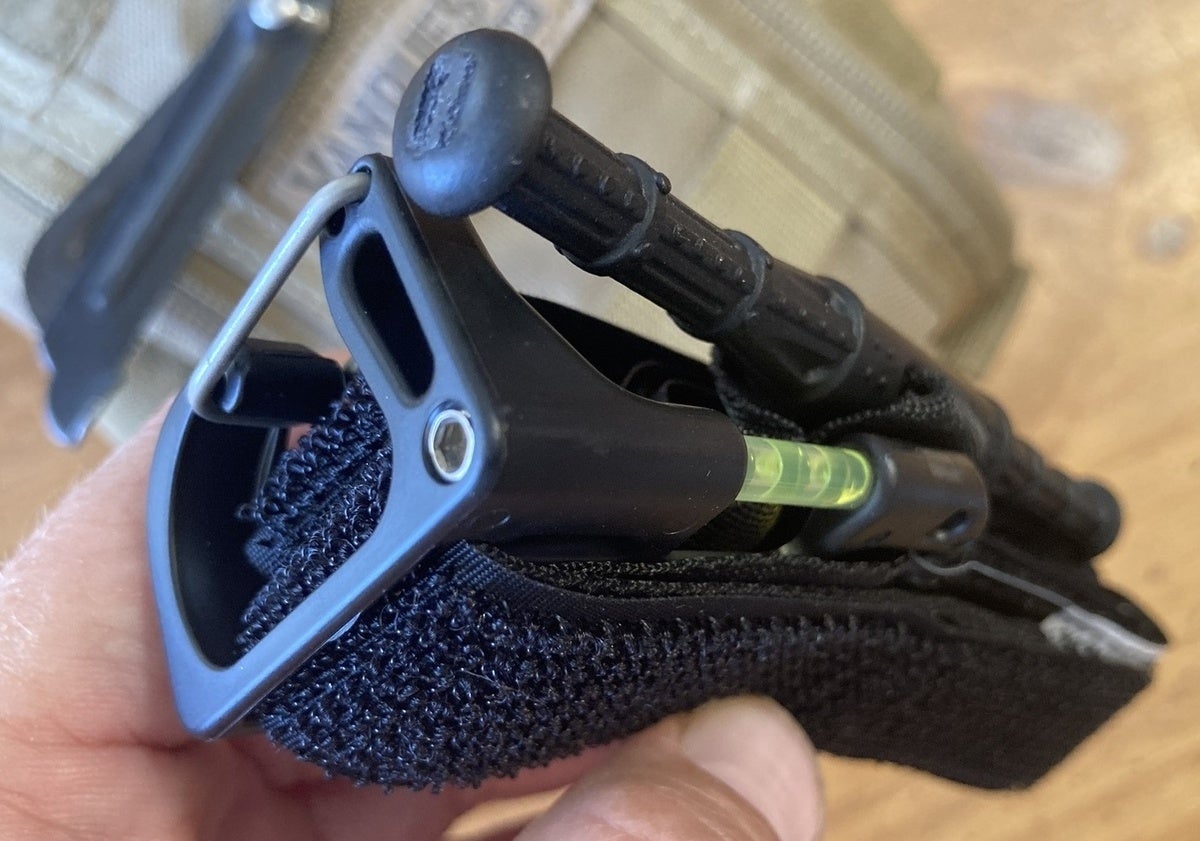
Simple instructions are printed right on the loose end of the TQ, along with a write-able bit of fabric to note time of application. Snakestaff Systems wants to make their instructional videos as accessible as possible, obviously, as the QR code shows up on the cloth TQ label as well as on their website in multiple places. Kudos to them on their product education videos.
An unusual feature of this TQ is the inclusion of the tiniest chemlight I’ve ever seen. It’s 0.75″ long and less than 0.25″ in diameter. It’s designed to “break” and activate in the process of tightening the windlass, ostensibly to shed some light on securing the carabiner. That’s not a bad idea if you manage to not light this short-lived resource during practice. I activated the light on the first application of the TQ. They do sell replacement tubes, but the removal/installation process isn’t immediately evident, and their website doesn’t talk about this. I emailed asking for instructions and received a reply within a day. There’s a tiny recessed screw that holds it in place; once a tool is located (have you seen my toolkit?), a change-out is easy.
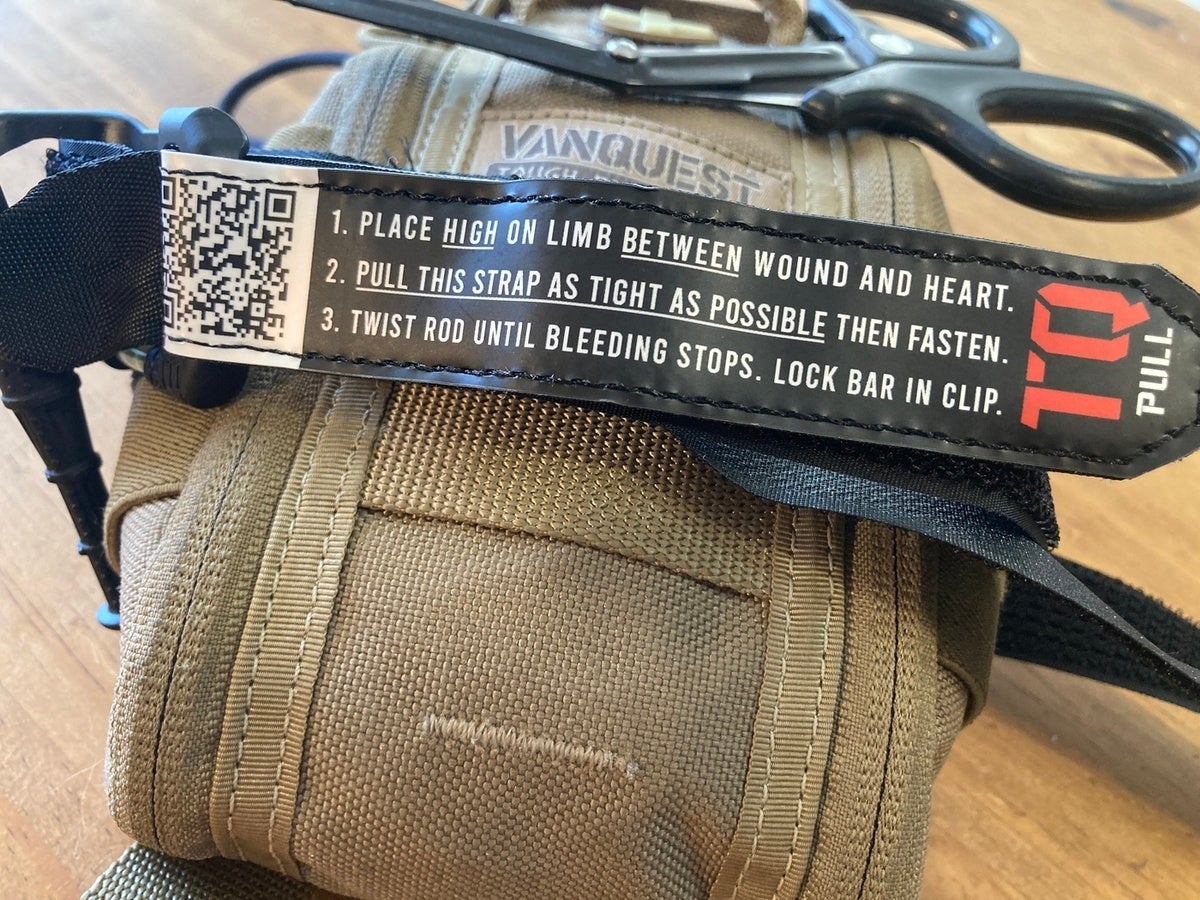
Finally, adding to the convenience of a small TQ that fits well in most mag pouches, there is the Snakeskin ETQ Sleeve, in two sizes for mounting on a sling or belt or carrying in a pocket. The pocket-size one is handy because it not only keeps the ETQ from unfolding, it protects pockets from abrasion from the Velcro that’s on the outside when it’s folded. These are a $15 add-on, and they appear to be in limited supply.
Mess Around, Find Out – Snakestaff Systems Everyday Carry TQ (ETQ)
In one of the instructional videos, a Snakestaff Systems rep says that the ETQ is akin to a concealment-intended pistol. It’s an eloquent observation. Micro-compact pistols represent a compromise and require dedicated practice in terms of handling in order to operate them as well as a full-size pistol. When my partner and I, who are pretty handy with CATs, first applied the ETQ, we found many parallels with full size versus tiny pistols. It takes a minute for fingers to learn to manipulate the clamp. The area for writing is smaller. It’s all very doable, just a little harder and; therefore, is more demanding of practice. When one imagines how much easier it’ll be to tote this little TQ around compared to a CAT, the effort seems small. Not to mention, it opens up the possibility of carrying more than one TQ because I have room. So yeah, just like a carry gun.
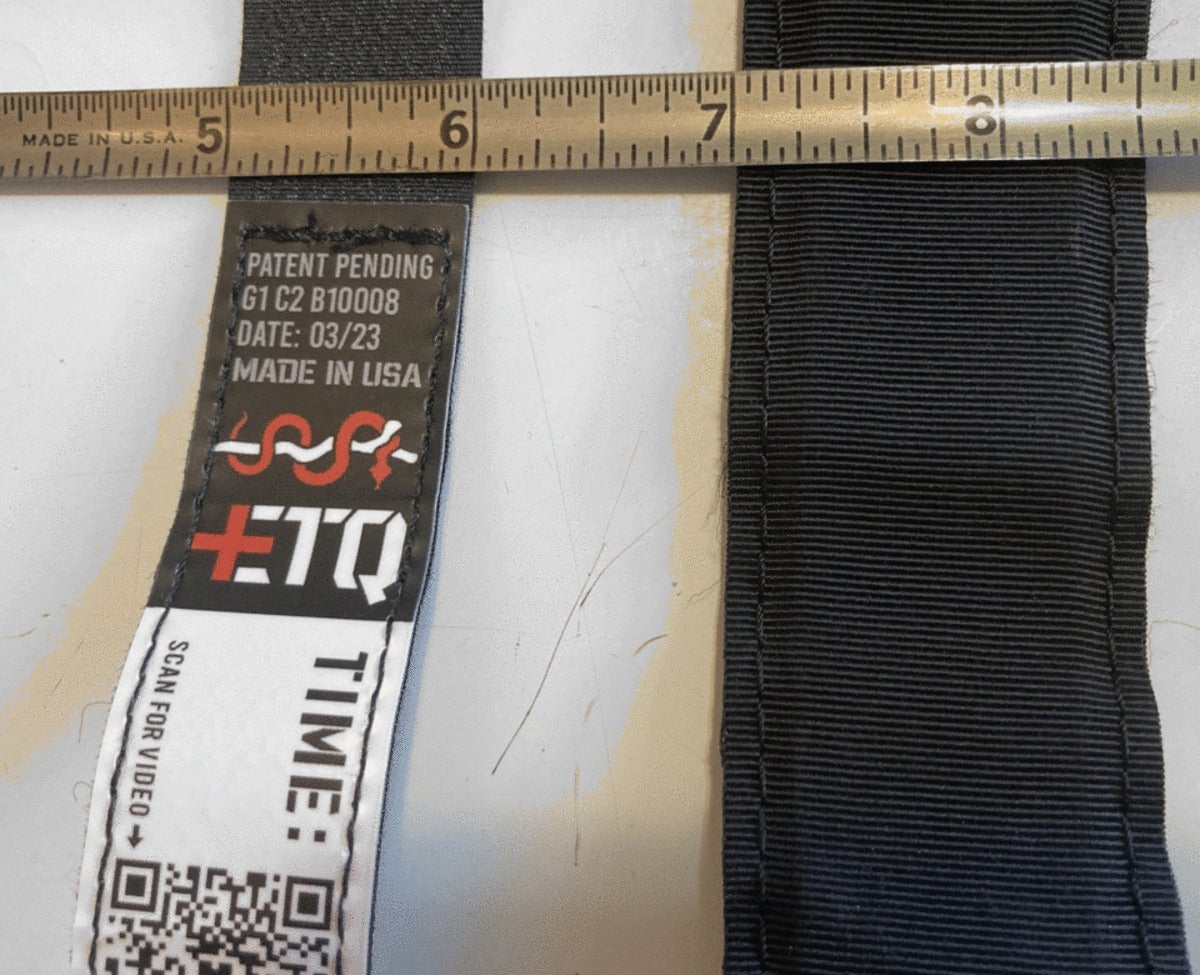
Not gonna lie, I find this TQ hurts when applied properly on the arm; less so on my leg. It’s less comfortable than three others I’ve tried (SOF, SWAT-T, and CAT), but less painful than the RAT. It only took a maximum of two windlass turns to shut circulation off in my arm or my partner’s leg. The narrow band does make a difference, especially if it gets twisted in the rush to apply it quickly. That twist is also a risk with the rubber-strap SWATs I carry. Training to stay calm and work methodically to apply this TQ cannot be understated in importance. A little TQ pain is nothing in comparison to losing a life. However as previously mentioned, another person may not appreciate this during a life-threatening crisis, and the increased anxiety that might be associated with pain caused by a TQ can increase the risk of shock. Brief verbal explanations and consolation should be a part of good training for “buddy rescue.”
Now for the nervously humorous phase of this test. We were having some fun racing one another on self-application of ETQs to the arm. In my haste, the clamp got rotated to the outer side of my arm, out of my sight and out of complete dexterity. It was on tight, utterly effective in its intended purpose. However, it was so tight I couldn’t turn it back into my purview to undo it, and feeling my way through the process was going to be “interesting” at best. The thought of cutting it off came to mind, and that’s what I’d have done if alone. That’s not without risk, as the dent in my arm was so deep I’d have risked cutting myself in the process. Thankfully I had someone there to undo the clamp so there was no crisis. Those who’d venture to practice alone should note that the ETQ isn’t as foolproof as others mentioned in this article in terms of self-removal.
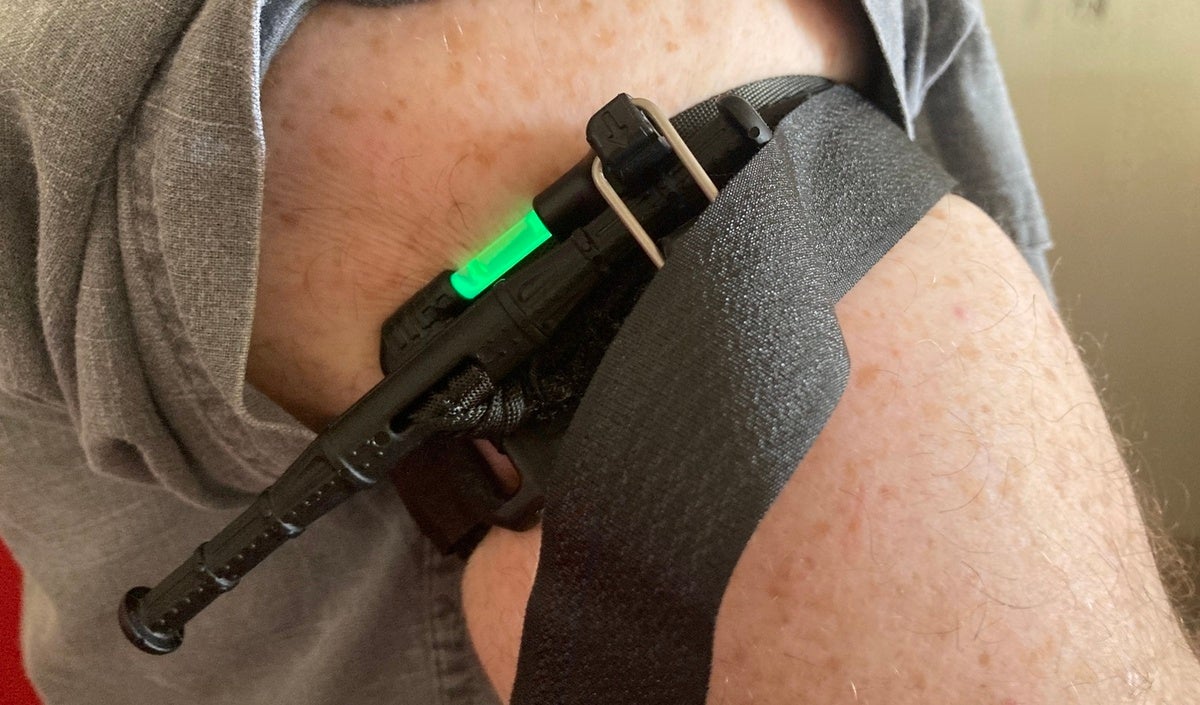
But Wait!… Maybe There’s More…
Especially if folks indicate interest in the comments, I may do an accessories review after installing the replacement chem light and using the sleeve I have on order. For now, I’m excited that there’s an effective TQ on the market that, while not perfect, allows more people to carry more often. Now if I could just find a way to inspire my non-gun friends to demonstrate their professed pacifism by training on TQs. If you’ve had any luck with that, I’m very interested to hear about it. Buy these American-made TQs online for $31.99, regardless of width. Bulk discounts available.
